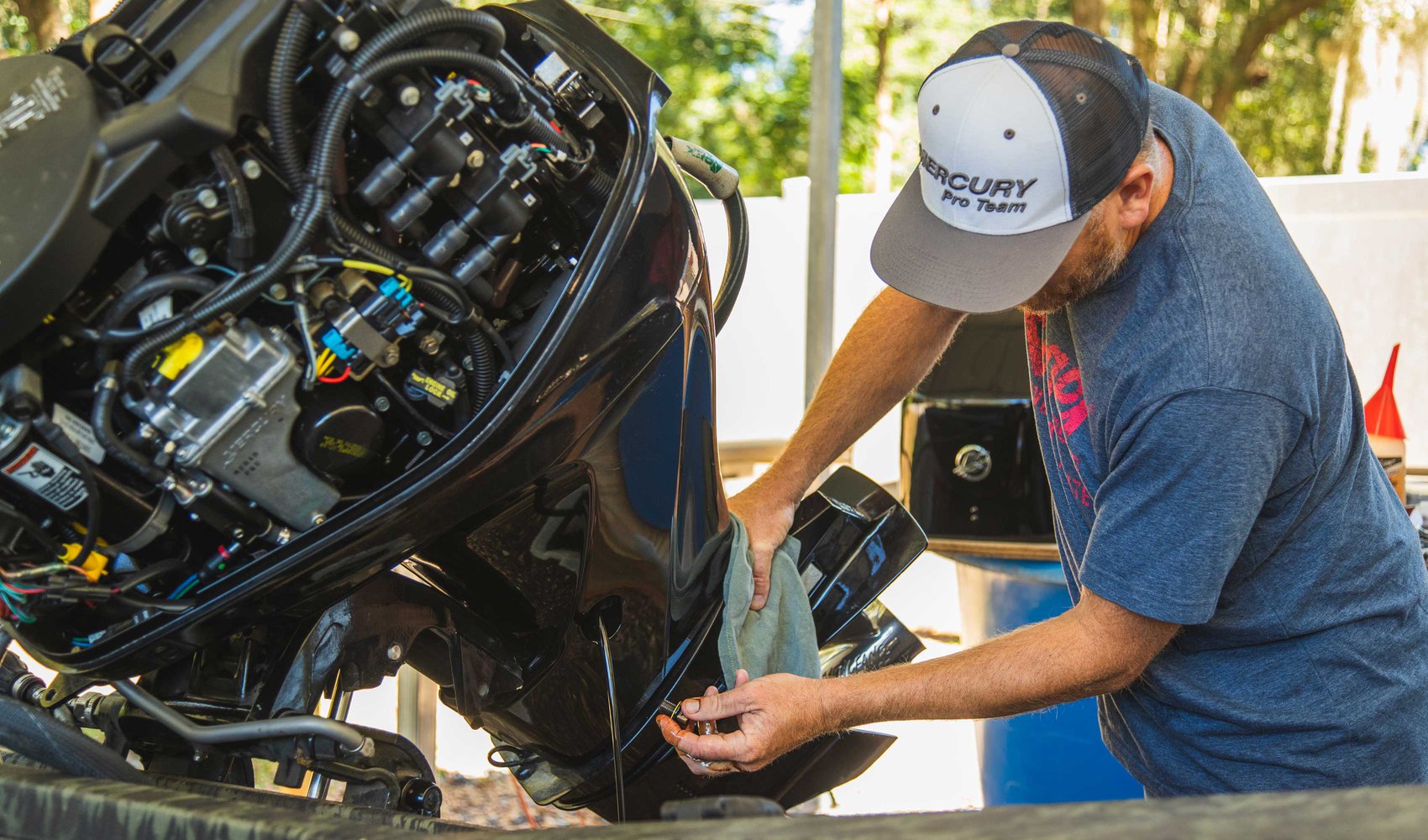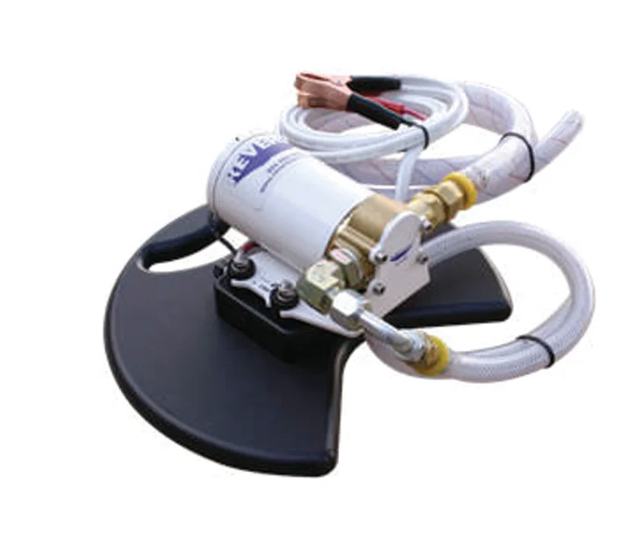How to Change the Oil in a Four-Stroke Outboard

Those beautiful new 4-stroke outboards behind you are wonderful. Smooth and quiet, powerful and quick, they've come a long way from the old smoky two-strokes that thumped along a few decades back. However, as four-stroke outboards have evolved, their maintenance has become something many owners feel may be too complicated or difficult to attempt. Most owners simply drop off the boat at the yard for a haul-out or call "the guy" when the scheduled oil change is due.
Until now, the only alternative was hand pumping the oil out, risking costly spills and spending a perfectly good boating morning performing an unusually awkward balancing act to pump the sump. Doing the job with the boat in the water is difficult at best, and hauling it simply to change the oil can be a scheduling headache not to mention a significant expense. Plus, it uses up the downtime that you set aside purely for on-the-water pleasure. Missing a good day of boating to change the oil just doesn't seem right.
A Little Help
Many four-stroke owners who want to do their own oil changes were put off by the rigors of this task, so when financial times were better, "the guy" got the job. Professionals usually rig a reversing gear pump to draw out the spent oil and replace it with clean oil without risking a spill. Time and efficiency is key to their profitability and customer satisfaction, so professional systems that perform this task can be costly.

Recently, Reverso Pumps of Ft. Lauderdale, FL, introduced a professional-quality system at a consumer friendly price, affording boat owners a simple, reliable package to change their own oil. It saves time and money and most owners report the system pays for itself after the first few oil changes.
The Reverso GP 311-PW is available in 12V or 24V and comes complete with a stainless steel wand that allows oil to be drained and filled through the dipstick tube. Some outboards have a "garden hose" type fitting on the crown of the dipstick tube and the GP-311 PW comes with a fitting to connect the extraction hose. The other hose on the unit is used to dispose of the waste oil into a receptacle and then return the clean oil into the engine. The unit is mounted on a hook-shaped base that makes a convenient hanger to support it on the engine cowling or any nearby surface.
This powerful gear pump is ignition protected, IP 65 rated for dust and moisture exclusion and can also be used for other jobs like oil changes on diesel engines, transmission fluid changes, and other maintenance chores. With a flow rate of 2.6 GPM, it makes short work of dirty tasks.

DIY Made Easier
Oil changes with the system are simple. First, trim the engine fully down and run the engine to warm the oil and circulate the dirt that may be accumulated inside the block. Battery clips are provided for simple attachment to the appropriate terminals on the starter to power the pump. Remove the dipstick and insert the stainless steel tube into the empty tube. Attach the wand to one hose and put the other into your receptacle for the spent oil, then just flip the switch to drain. Once the sump is empty (which normally takes under a minute), be sure the lines are empty and put the hose into the clean oil. It's best to know the capacity of the sump and measure that amount into a clean container to fill your engine with the exact amount required. Flip the switch to fill and load in the clean oil. Don't forget to replace the oil filter with an OEM replacement.
There are a few other pumps on the market that will perform a similar task. Most require you to find the hardware, hoses, switch, etc., and you'll need to engineer your own system. Either way, getting a prepared system or configuring a pump and components to fit your needs, don't forget what you'll be achieving — maintenance on your schedule at your price with the knowledge that the oil you desired is right where it is needed. And, it just might feel good to be doing this kind of task on your own.
Now you can save calling "the guy" for things beyond your skill/desire/frustration level. Oil changes are now a task right in your wheelhouse.